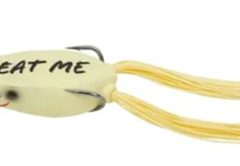A proper installation of a boat’s electronics is not just important—it is essential! A poor installation doesn’t just mean that the equipment won’t turn on. It can also translate into your voice not being heard by a distant radio, a buoy or rock not visible on your radar screen, degraded position and navigational accuracy, or fish overlooked and not detected by your fishfinder.
Unfortunately poor and trouble prone electronic installations are becoming commonplace. And regrettably some of the poorest installations are coming on boat dealer and factory equipped boats.
It is important that you protect yourself and your investment from an improper installation that could result not only in substandard performance but could jeopardize the safety of both you and your family. Here are some tips to help avoid a poor installation.
Ask Questions!
- Who is doing the installation? Are they a trained and experienced professional or the boat seller’s handy man who also installed the bilge pump, head, and washed down the boat?
- Does the installation include set up, adjustment and calibration of the equipment?
- Was the autopilot and navigation gear actually sea tested and adjusted while the boat was underway?
- Were the electronics properly interfaced to share information to take advantage of each instrument’s full potential and function?
- Did you receive training on how to use your new electronics? (What good is your new equipment if you don’t know how to operate it?)
Seal of Approval
Confirm the qualifications of those who do the installation of your vital communications and navigation gear. Among the most qualified are technicians from NMEA (National Marine Electronics Association) dealerships. They tend to follow strict NMEA installation standards and guidelines that closely parallel the tough professional ABYC (American Boat and Yacht Council) and US Coast Guard electrical wiring standards for safety and equipment performance.
Here are some credentials to look for: NMEA CMET – Certified Marine Electronics Technician; NMEA MEI – Marine Electronics Installer; FCC (Federal Communications Commission) General Radio Operator’s License as well as Certified Factory Trained Installer. These certificates represent that their holders are marine electronics professionals who have the proper training and experience to perform a proper installation.
Signs of a Poor Installation
Keep in mind that a poor installation often looks like one. Whether you are checking on the quality of an installation or plan on doing the installation yourself, here are some common pitfalls to lookout for and avoid.
Be especially aware of “rats, spiders, snakes and octopi!”
RAT – refers to haphazard, sloppy, unorganized wiring that tends to resemble a rat’s nest.
SPIDER – web – like dangling, suspended and unsecured wires and cables.
SNAKE – unbundled wiring lying loose on the deck or at the bottom of the bilge.
OCTOPI – multiple tentacle-like wire terminations forced onto a single connection point.
Above all don’t starve your electronics. Proper, trouble free operation is dependent on a solid and stable voltage source. Prevent performance robbing voltage drops by using adequate size wiring and proper connections. Check your owner’s manual for recommended cable sizes. Keep these pointers in mind and you will end up with a quality, optimum performing and a more reliable, trouble free installation.
[easy-social-share]






